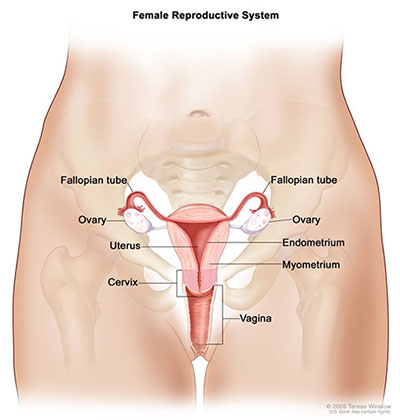Salpingo-Ovarian & Peritoneal Overview
Ovaries: The ovaries are a pair of organs in the female reproductive system, located in the pelvis on either side of the uterus. Functionally, the ovaries secrete estrogen and progesterone, the female hormones that control the development of the breasts and other female body characteristics, as well as regulate the menstrual cycle and pregnancy. During each monthly menstrual cycle, one ovary releases an egg, which travels through a fallopian tube to the uterus.
Fallopian Tubes: The bilateral fallopian tubes extend from each side of the uterus, ending with fingerlike projections adjacent to each ovary (fimbriae). They conduct eggs produced and released by the ovaries to the uterus. Together with the ovaries, they constitute the “adnexae” in the female reproductive tract. Some types of ovarian cancers are thought to start in the fallopian tubes and then spread to the ovary.
Peritoneum: The peritoneum is a protective layer in the abdomen. It consists of a type of protective epithelial covering (mesothelium) and an underlying layer of thin connective tissue. It lines the abdominal cavity and pelvis (parietal peritoneum) and covers the visceral organs (visceral peritoneum), thereby allowing organs to move freely. Cancer can begin in the peritoneum and then spread to the ovary.

Figure 1. Reproductive System, Female, Anatomy. Source: Terese Winslow (Illustrator), National Cancer Institute.
Updated: June 8, 2018
